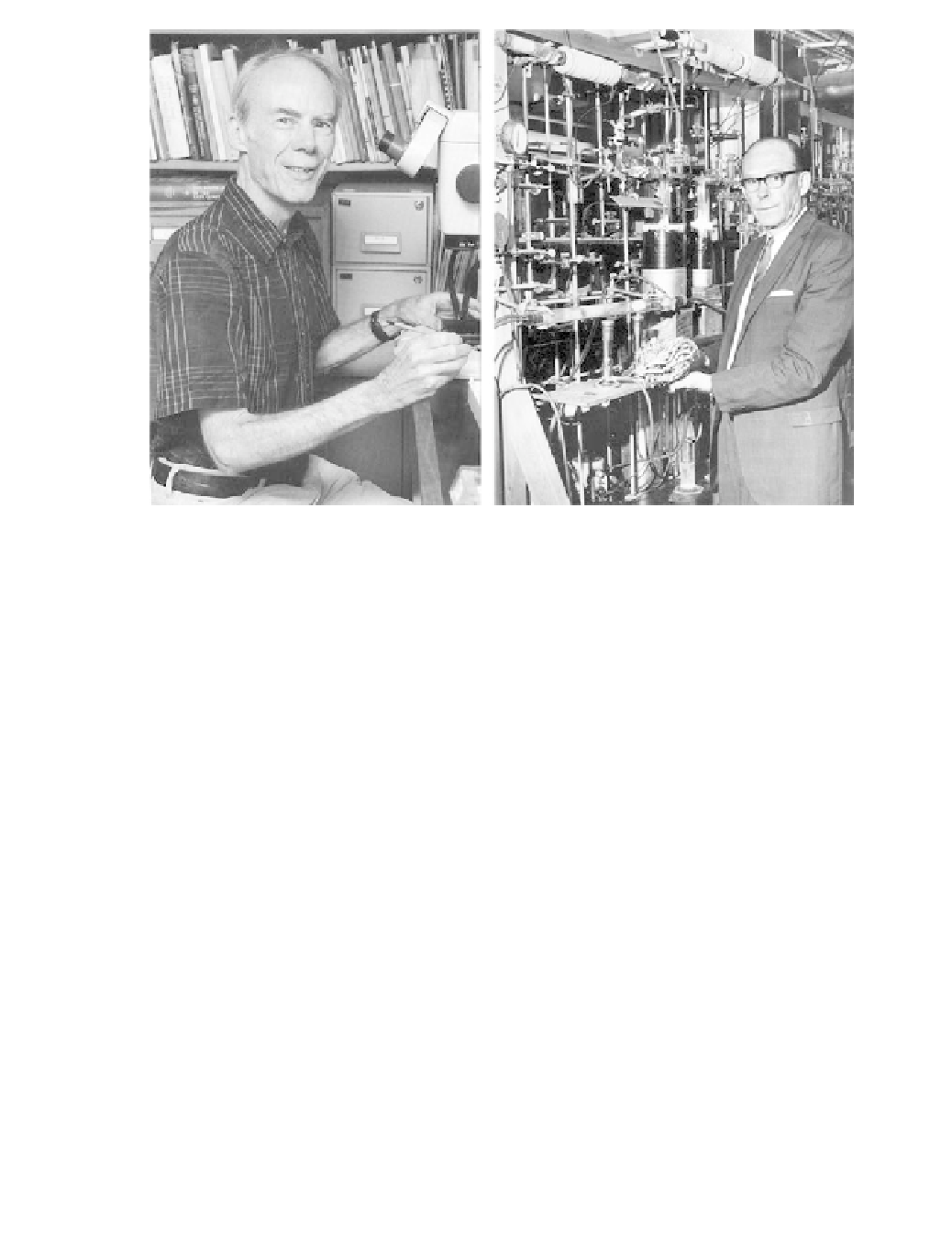Geoscience Reference
In-Depth Information
Figure 13.1
Nick Shackleton (1937 to 2006) and Willard Libby (1908 to 1980) are
arguably the two most infl uential fi gures in Quaternary science in the second half of
the 20th century. Nick Shackleton is shown picking forams for oxygen isotope analysis
in the Godwin Laboratory in Cambridge (University of Cambridge Newsletter, Decem-
ber 2004). Willard Libby is shown in his Laboratory at UCLA in 1968 (University of
California history digital archives).
The Upper Palaeolithic Revolution
Advances in radiocarbon dating are an important part of this story because, as far
as the archaeological record of the Upper Palaeolithic is concerned, this is the main
method for dating this period and for building correlations between archaeological
sites over the past 50,000 years or so (Mellars, 2006). This is a small portion of
Quaternary time, but it incorporates dramatic changes in both the environmental
and archaeological records. It is a key period in human history that saw the demise
of the Neanderthals (the end of the Middle Palaeolithic) and the establishment of
anatomically modern humans (Cro-Magnons) as the sole human species. In Europe
this is known as the Upper Palaeolithic revolution (Mellars, 1994).
The Upper Palaeolithic is marked by a set of fundamental cultural shifts that set
it apart from the Middle Palaeolithic. Stone tool production shows greater innova-
tion and a much wider range of tool types. New raw materials enter the human
tool kit - with elaborate use of bone and antler - and this period saw the develop-
ment of more effective social networks (Gamble 1986; 1999). Perhaps the most
striking aspect of the Upper Palaeolithic record in Europe are the remarkable cave
paintings of France and Cantabrian Spain from sites such as Lascaux, Chauvet
and Altamira (Bahn and Vertut, 1997) (fi gure 13.2). Questions surrounding the
causes (whether environmental or cultural, or a combination of both) and precise
timing of the Neanderthal extinction, and the pace of modern human (Cro-Magnon)





